Hi, this is Mike. I’m an adventurer and a dad, and modifying the suspension on your Toyota Tacoma doesn’t have to be complicated. But if you surf enough forums, watch enough YouTube videos, and believe in yourself, you can make it complicated.
But if you want to keep it simple, here’s what you need to know.
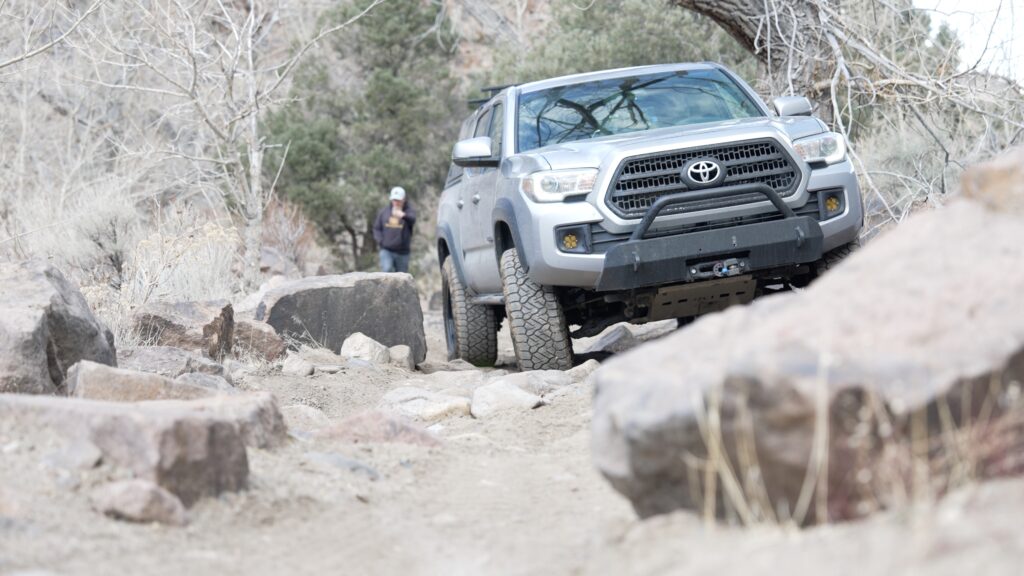
BUMP STOP BASICS
- You definitely need bump stops
- Bump stops are a piece of rubber that prevents metal-on-metal contact when you hit a REALLY big bump with your car or truck.
- Your vehicle comes with these from the factory.
- Unless you’re getting really extreme, or you just like making things complicated, your stock bump stops will work just fine.
If you want to move forward to making things really complicated, here’s what you need to know.
PRODUCTS DISCUSSED HERE
- Supersprings Sumo Spring
- Timbren Active Off-Road Bump Stop
- Toyota Leaf Spring Bumper
- ARB BP-51 Suspension
Our Tacoma has Old Man Emu’s BP-51 suspension, including shocks and springs. So it sits about 2.5 inches over the factory ride height.
WHY YOU MIGHT NEED DIFFERENT BUMP STOPS
Many lift kits come with a spacer that moves the bump stop closer to the axle. This is to prevent the shocks from bottoming out because the collapsed length exceeds the clearance of the stock bump stop. This would cause the shock to bottom out, which might be bad, depends on the shock.
The Old Man Emu kit does not require modified bump stops. The instructions do not require or recommend modifying the bump stops. The specifications state that it is compatible with 0 lift, and the collapsed length of the shock is only about an inch greater than the stock shock.
So If you like to keep things simple, you can stop here and keep using your stock bump stops.
TOYOTA TACOMA CONSIDERATIONS
However, the rear axle in the Tacoma does not have a lot of uptravel. That means that you end up using the bump stops a lot. We hit ours every time we back out of the driveway, speedbump, rock, or rut. This is even more of a problem if you carry much extra weight in your Tacoma. This can include a topper, tools, or camping gear. Many Tacoma owners are looking for extra load-carrying capacity to make up for this.
TIMBREN ACTIVE OFF-ROAD BUMPSTOPS
View Product: https://amzn.to/4bBaij9
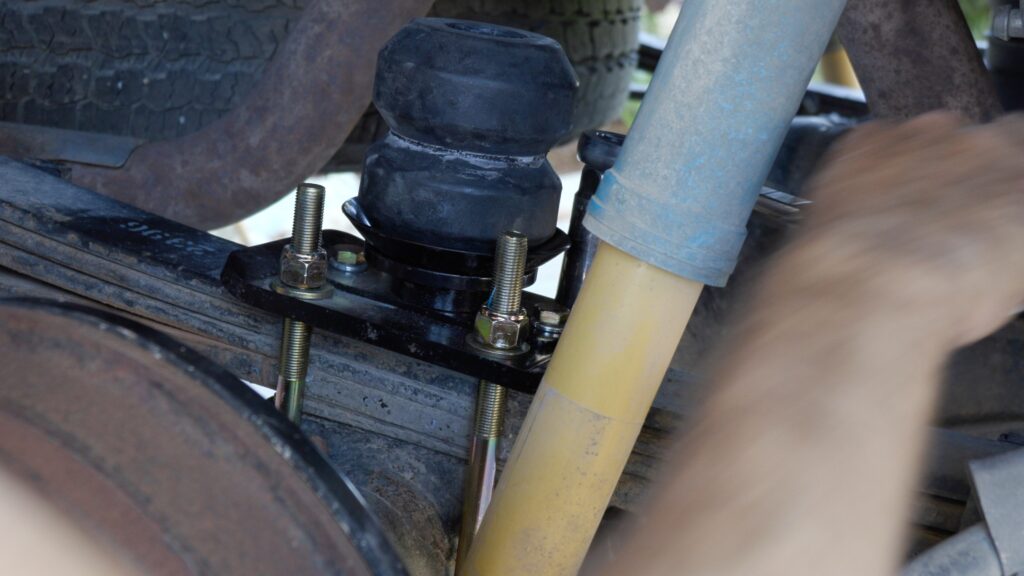
After installing the Timbren Active Off-Road Bump Stops I upgraded the suspension to better handle the loads I was carrying. And if you want to cut straight to the best solution, I’d recommend you get springs that can handle the load, rather than use a bump-stop based product like the ones discussed here.
If I wanted to keep things simple, and you already know that I do not, I’d just put the stock bump stops back on. And to be honest, I considered it. Unfortunately, the kit I used came with a U-Bolt Flip kit, so the u-bolts point up instead of down and I can’t use the stock parts anymore. But I do need something softer to replace the Timbrens.
I installed Timbren Rubber bump stops a few years ago to help with that, and you can check out the video where I talk about that. The short story there is that even though Timbren markets these bump stops as softer than stock, they are not. When the truck hits them it’s jarring and bouncy and I don’t love it.
SUMO SPRINGS
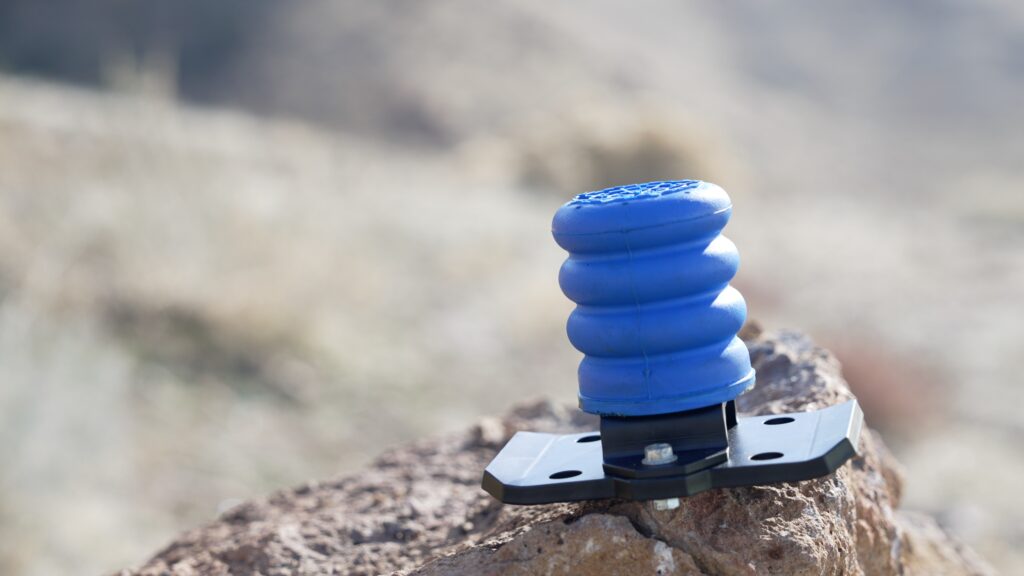
A few months ago Super Springs came across my video and asked if I wanted to try their Sumo Springs Product. Sumo Springs are a bump stop made from micro-cellular Polyurethane foam. They come in three different densities depending on the weight of your vehicle. Some sump springs can be used for carrying constant load, like an overload spring, but for my purposes, it’s just a bump stop.
TOYOTA LEAF SPRING BUMPER

So let’s compare. The stock bump stop is short and made of very hard rubber because it’s meant as a last resort padding in case of big impacts. It’s about 61mm of rubber.
The Timbren bump stop is made of a similar black rubber, but it’s hollow inside and has a bellowed structure to allow it to be softer than solid rubber. It’s much taller at 95mm and is designed to impact earlier in the travel to spread the harsh stop out over a greater distance and time.
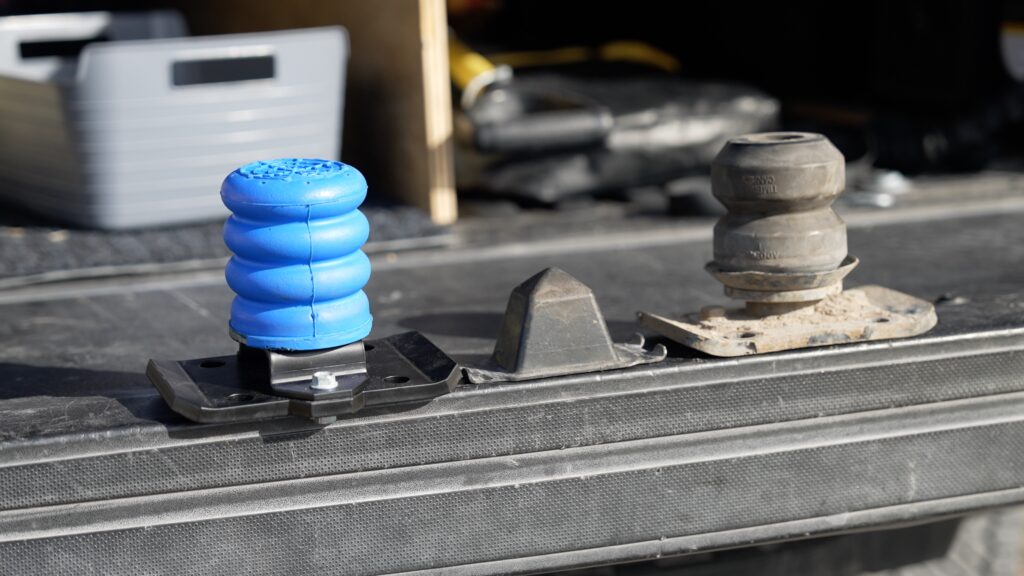
The Sumo spring is taller still at 139mm and is made of a completely different material micro-cellular polyurethane designed with less bounce to soften harsh rebounds, the exact thing I was looking for.
I wanted to test the relative compression of all three bump stops, so I jacked up my dad’s Silverado with each to see how much they compressed under a static load. I used the Silverado because it is heavier than the Tacoma.
DISCUSSION
I’ve been driving around with sumo springs on the driver’s side for about a month, and Timbren bump stops on the passenger side. I notice that the bottom out is harsher with the Timbrens. Semi-quantitatively, the sumo springs are 1 cm thinner when fully compressed and compress over a longer distance, so they are noticeably softer and theoretically allow more axle up travel when hitting bumps.
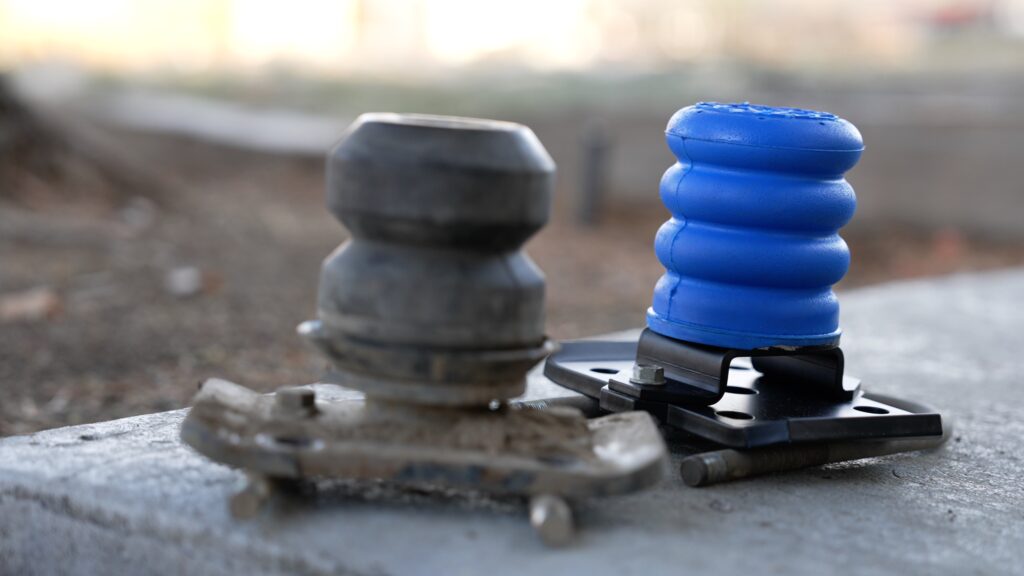
The Sumo Spring really delivers and I’m definitely glad to switch. while it’s a little taller, it interacts over a greater distance, making its effect a lot more subtle. Plus, the material doesn’t rebound as fast and makes for a much better experience.
As for the front sumo springs. I have to admit I don’t notice much there. The suspension was not bottoming out up front even on severe bumps. The sumo bumps do make contact, but they’re so soft I don’t really notice them. So I can’t really say whether they are good or not at this point.
Another thing to note is where the compression takes place. Both the Sumo Spring and the Timbren have about 35mm of metal below the actual bump stop. This will never compress and moves the compression zone farther away from the spring. This limits travel and puts more force on the bump stop because the shock hasn’t had a chance to reach the end of its travel.
During low-speed compression, like you would see in 4-low off road “rock crawling” neither the Sump Spring nor the Timbren allow for full up travel. Without the force of momentum, they don’t compress much at all with just the weight of the truck. So they limit suspension up travel by about 2 inches by my semi-quantitative measurement.
BUMP STOP VS OVERLOAD SPRING
When it comes right down to it, neither the Timbren Active Off-Road Bump Stops nor the Sumo Springs are actually bump stops; they’re overload springs. They are there to augment the leaf springs when you put a load in the truck so that you don’t get excessive sag.
Sumo Springs leans into this in their description and calls them a “suspension enhancement.”
Timbren has two products, and you can see debate about this in the comments on my original video (https://youtu.be/HSg5QYdum20?si=8syNQ2j12yA3Q3j_). The Active Off-Road Bump Stop, Which is what I have, and the Suspension Enhancement System, which is explicitly an overload spring. The description calls the SES springs and describes the attributes of a spring, the same as on the Sumo Springs page.
The thing is, the Active Off-road Bump stops are pretty similar, except for the overall kit height and the load rating, with the active off-road bump stop being 1/2 shorter and 4000 pounds lighter.
I can’t imagine a Tacoma with 6000 pounds on the axle…
CONCLUSIONS
Either way, the Timbren Active Off-road bump stop is still more of an overload spring than a bump stop. And at that point, I think the Sumo Spring is a better design, though neither product will go to full compression when “rock crawling” or slowly flexing out the suspension, which means they both limit suspension travel.
If you need the extra load-carrying capacity, then that may be a tradeoff you’re willing to make.
So that’s all I have to say about that. If you want to help make this even more complicated and follow me down the path of overthinking something you probably shouldn’t think about at all, the best way to do that is to leave a comment. Thanks for watching, and happy trails.







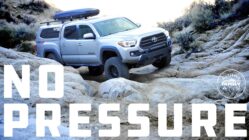




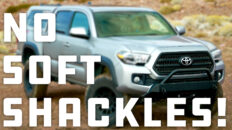



Add comment